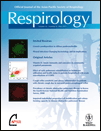Usage of spacers in respiratory laboratories and the delivered salbutamol dose of spacers available in Australia and New Zealand
Conflict of interest statement: The study was equally funded by Thayer Medical (USA), Medical Developments International, Bird Healthcare and Visiomed by invitation from the authors. The study sponsors had no input into study design, data collection, analysis or interpretation or any aspect of manuscript preparation.
ABSTRACT
Background and objective: Purchase and disinfection costs together with medication delivery factors may influence the choice of drug delivery options. This study assessed salbutamol delivery habits used in respiratory laboratories and quantified the delivered salbutamol dose of locally available spacers.
Methods: An online survey was used to obtain data on disinfection processes, costs and delivery device choices. The delivered dose of six commercial spacers was assessed. Particle size distribution of salbutamol (Ventolin, GSK, 100 µg/actuation) from six spacers of each type was measured by quantifying the amount of drug (µg) deposited on each stage of an Anderson Cascade Impactor (ACI) using UV spectrophotometry. Clinical conditions were simulated using a flow volume simulator (FVS) and delivery of salbutamol via a pressurized metered dose inhaler and spacer to a low-resistance filter was measured.
Results: Fifty survey responses were obtained, with 37 (74%) using ≥1 type of spacer of which 92% processed single use spacers. The most commonly used spacers were Volumatic (n = 24), Breath-a-tech (n = 8) and Space Chamber (n = 7). The median disinfection cost was $2.45. Delivered salbutamol dose varied significantly and ranged from 16.98 to 38.28 µg with the ACI and 22.56 to 58.82 µg with the FVS. Using the FVS, small-volume spacers delivered similar doses (22.56 to 28.46 µg), while large-volume spacers delivery was more varied (24.31 to 58.82 µg).
Conclusions: The majority of respiratory laboratories had not updated re-processing policies to comply with new regulations. The delivered salbutamol dose varied significantly and this might effect the choice of preferred spacer type.




